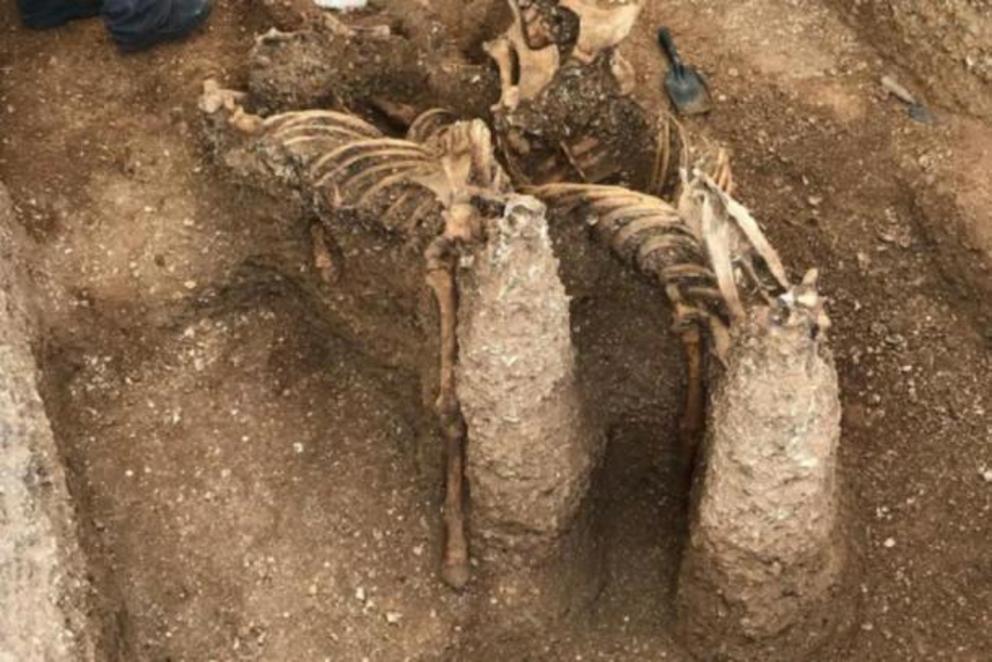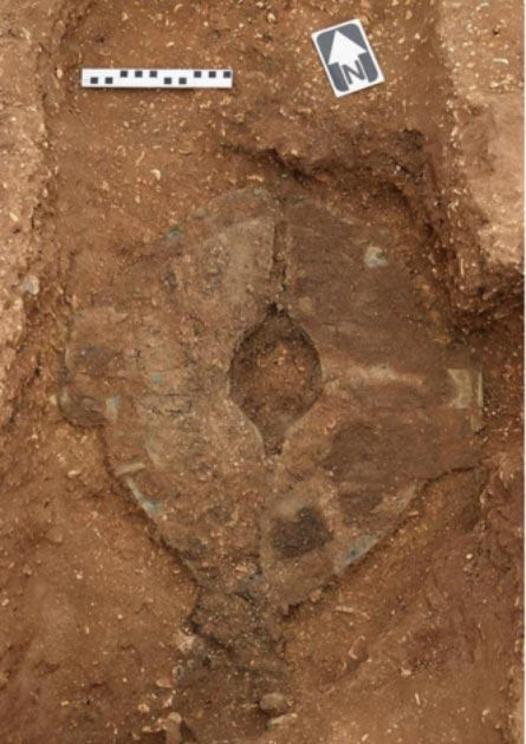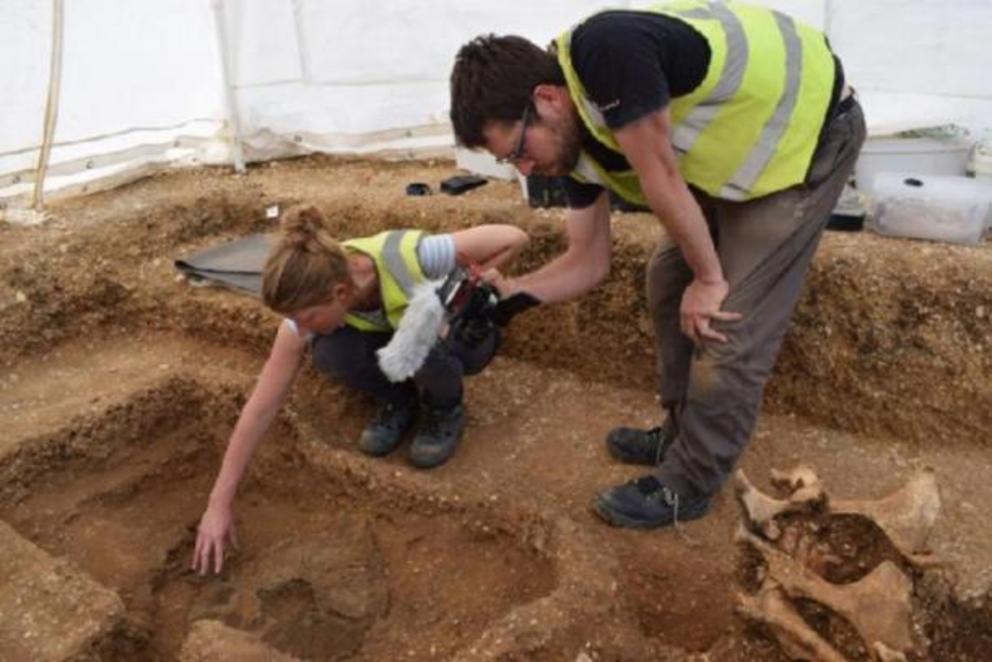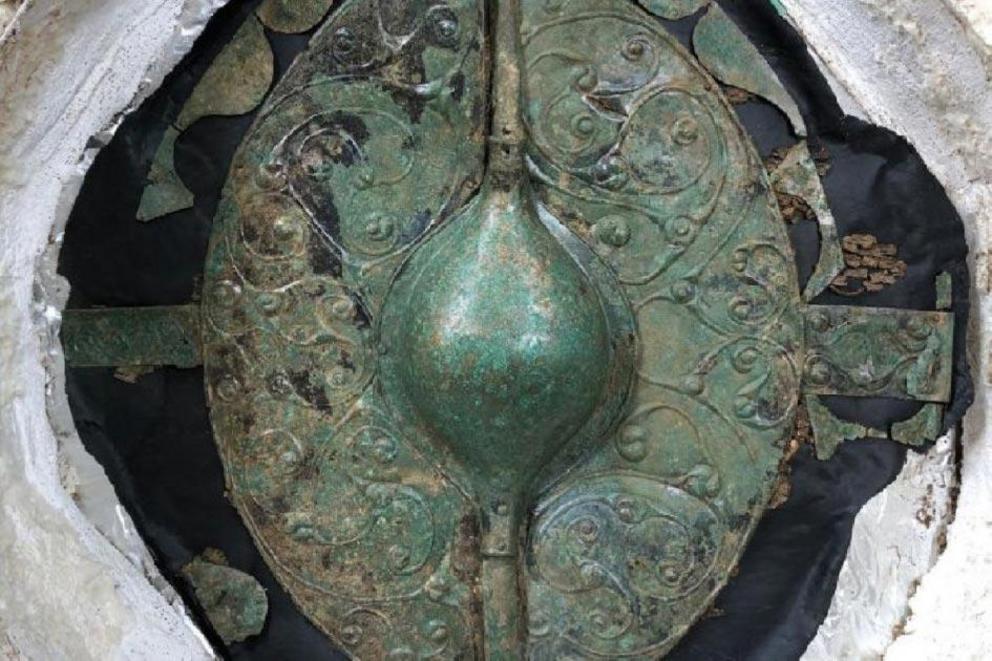Iron Age warrior shield hailed as most important find this millennium
The stunning conserved warrior shield found at the site in Pocklington.
Conservation experts have been able to restore a stunning shield that is 2,200 years old. The artifact belonged to a Celtic warrior who was buried in a chariot burial in the north of England. The warrior shield has been hailed as one of the most important and remarkable ancient finds this millennium.
Last year, construction workers that were building a housing development came across something unusual in the earth. They found what appeared to be a grave at the project known as 'The Mile’ in Pocklington, East Yorkshire, England. The company behind the development, Persimmon Homes, contacted MAP Archaeological, who subsequently conducted an excavation of the site and what they found was truly amazing.
Chariot Burial
The workers had come across an Iron Age warrior’s chariot burial. The remains of the warrior were found in the chariot and two skeletons of horses were also unearthed. Paula Ware, an archaeologist with MAP, stated that “these horses were placed with their hooves on the ground and their rear legs looking as though they would leap out of the grave” according to The Yorkshire Post . A number of grave goods were also uncovered with the dead man, including a precious brooch. Interestingly as part of a funeral ritual, some young piglets had been sacrificed and placed near the deceased.
 Skeletons of the horses found at the site in Pocklington
Skeletons of the horses found at the site in Pocklington
This grave was dated to the period 320–174 BC when Celtic tribes dominated the British Isles. At the time this part of England was dominated by the Arras culture, which is noted for its unusual burials. It appears that the warrior was a member of the elite, who probably died of old age and not in battle. This burial was 20 feet (60m) away from the grave of a young male who had been speared multiple times, possibly as part of a ritual.
Rare Burial
The nature of the grave would seem to indicate a belief in the afterlife. The food and goods were deposited for the dead warrior for his existence after death in this world. This is the first chariot burial of its kind, uncovered in this part of Britain. Curiously a near-identical burial “dating to the third or fourth century BC was discovered in 2013 in Svestari in north-east Bulgaria” reports the Pocklington Post .
The remains of the warrior shield were found near the chariot burial, and were in a poor state after centuries in the earth. It clearly needed a great deal of conservation work to repair the shield. It was found face down in the chariot near the deceased and it measured 30 inches (74cm). The leather fitting and wooden handle had long since disintegrated.
 The warrior shield unearthed before conservation work had been completed
The warrior shield unearthed before conservation work had been completed
Stunning Warrior Shield Uncovered
Now after the completion of the conservation work which was a lengthy process, the warrior shield has been revealed in all of its glory. The object is ornately designed, specifically it is typical of the “La Tène' culture that spanned Europe from around 450–1 BC” reports The Daily Mail . It was made by a craftsperson hammering out bronze sheets from the reverse side.
The Daily Mail further states, that it has a design of “mollusk shells in a series of three-legged, triskelion-like whorls around the central raised boss”. Researchers have been amazed by the shield and its artwork. According to The Yorkshire Post , it has been called “the most important British Celtic art object of the millennium” and has been compared to the famous Wandsworth shield boss, which is on display at the British Museum . The conserved shield has a unique scalloped border, which is like nothing else found from Iron Age Europe.
 Archaeologists unearthing the warrior shield together with the remains of the man
Archaeologists unearthing the warrior shield together with the remains of the man
Battle Worn Shield
The shield was not just an ornament, but it appears to have been used in battle, which is evidenced by a sword slash on it. The received wisdom was that such items were not used in battle. However, Ware stated that “our investigation challenges this with the evidence of a puncture wound in the shield typical of a sword” according to The Daily Mail. It also appears that the object was repaired and may have even been used in several battles.
Excavations at the site in Pocklington are now completed. There are hopes that the treasure trove of objects will be put on display at a local museum. The full findings of the excavation are expected to be published in book form in 2020. Research is expected to continue on the artifacts found in the chariot grave, and they could provide more insights about Iron Age Britain.

